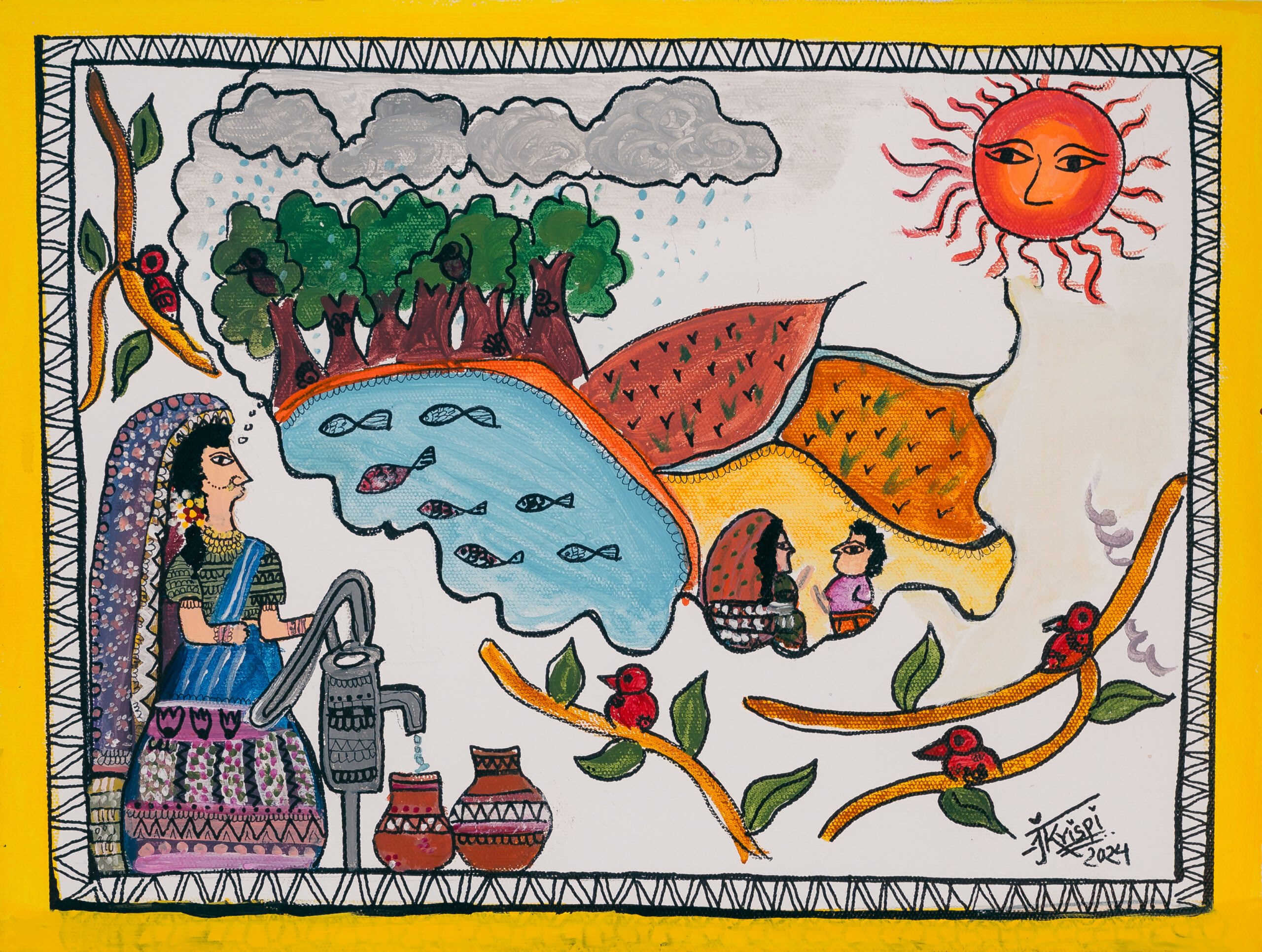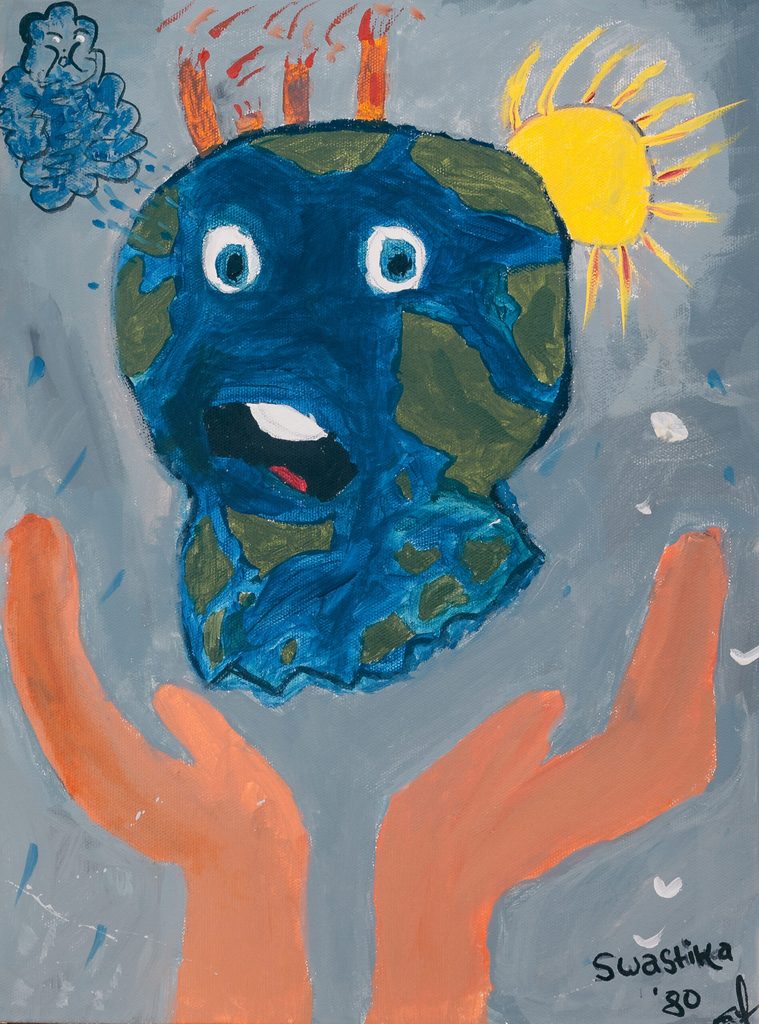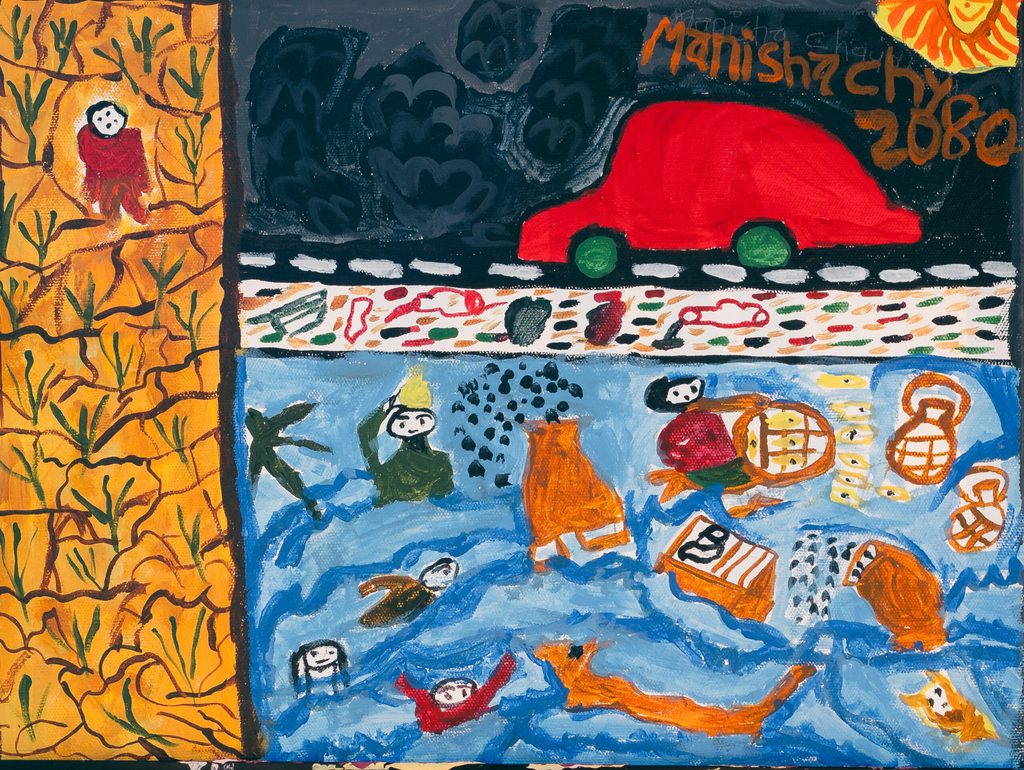Girls Get Equal in Nepal
Girls Get Equal is a campaign for girl's power, voice and leadership. It's vision is a world where girls and young women, in all their diversity, are equally…
Twenty youth activists in Nepal break climate change silence through ‘artivism’, shedding light on the intersectionality of climate justice and gender inequality.
Amidst the urgent calls for climate action, 20 dynamic youth activists from diverse backgrounds in Nepal joined forces for a powerful expression of ‘artivism’. Through their art and activism, these young champions are using art to express the ongoing effects of climate change and their connection to gender inequality.
The impacts of climate change are not equally distributed. Discriminatory social and gender norms exacerbate the challenges faced by girls and women, deepening existing inequalities and hindering progress toward equality and justice. Now, more than ever, it is crucial to amplify the voices of those most impacted and advocate for a sustainable and just future for all.
With this in mind, Plan International brought together 20 young people to take part in an Art is Power workshop where they were encouraged to use their artistic skills as a powerful tool to express their thoughts on how gender inequality and climate change are interconnected.

I wanted to focus on the rural Madhesi women that are suffering due to no or less rainfall. The woman is trying to get water from a hand pump but to no avail. Even the underground water is arsenic and negatively impacts her health. Devastated with the current situation, she remembers the time when there was abundant water and greenery around her.
– Krispi, 21
Twenty-one-year-old Krispi painted a woman dreaming of a plentiful world, with rivers full of fish, lush green forests and crops growing in the fields. “Colour gives me the power to express my thoughts into art,” she explains.
“Colour gives me the power to express my thoughts into art.”
Krispi, 21, Kathmandu
When crises occur, it is girls and women who disproportionally bear the brunt as they are more likely to be responsible for securing food, water, and fuel. Women depend more on, yet have less access to, natural resources. This puts added pressure on girls, who often have to leave school to help their mothers manage the increased burden.

The earth is heating up due to global warming. The youth may be trying their best to save the planet but unless industrialisation and pollution are controlled, the effort by young people will not bring about any substantial change.
– Swastika, 20
“Girls are the first to drop out of school, become pregnant, or marry early when their families and communities are affected by crises. Girls, women, and young people must be given a bigger say in climate policy, so they can help shape the world around them,” says Swastika, 20, who used her artistic talents to show a world under pressure from the effects of burning fossil fuels.
“Girls are the first to drop out of school, become pregnant, or marry early when their families and communities are affected by crises. Girls, women, and young people must be given a bigger say in climate policy, so they can help shape the world around them.”
Swastika, 20, Sindhuli
This powerful narrative underscores the urgent need for inclusivity in climate policy, ensuring the active involvement of girls, women, and young people in shaping a resilient and just future for all. By creating spaces for young people, especially girls, to raise their voices through the medium of art, the Art is Power project is raising awareness and fostering dialogue on some of these critical issues.

I wanted to show the causes and effects of climate change in the world. We are causing so much pollution that it is causing frequent floods and long periods of drought. The fertility of our soil is also decreasing.
– Manisha, 19
Nineteen-year-old Manisha’s painting depicted a flooded world, with people, livestock and crops all washed away. A solitary woman sits in a tree watching on. “Climate change is impacting the lives of women and girls across the world, putting them at increased risk of sexual and gender-based violence.”
“Climate change is impacting the lives of women and girls across the world, putting them at increased risk of sexual and gender-based violence.”
Manisha, 19, Bardiya
Following the workshop, the activists’ paintings took centre stage during the launch of Plan International’s new report: For Our Futures: Youth Voices on Climate Justice and Education. This groundbreaking report sheds light on the profound impact of the climate crisis on access to education for girls and young women in 3 countries across the Asia Pacific region.
The report, co-researched by 30 youth activists from Indonesia, Nepal and Australia, revealed that a third of young people surveyed reported school closures, damage or destruction in the past year due to climate-related events. Additionally, almost half expressed feeling unsafe travelling to and from school due to the effects of disasters.
The art displayed at the launch event serves as a poignant visual representation of the challenges articulated by the youth activists. Their creative expression echoes the urgent need to address the climate crisis and safeguard children’s fundamental right to education, particularly girls and young women.
Now is the time to stand with young people and pave the way for a more equitable and sustainable world.